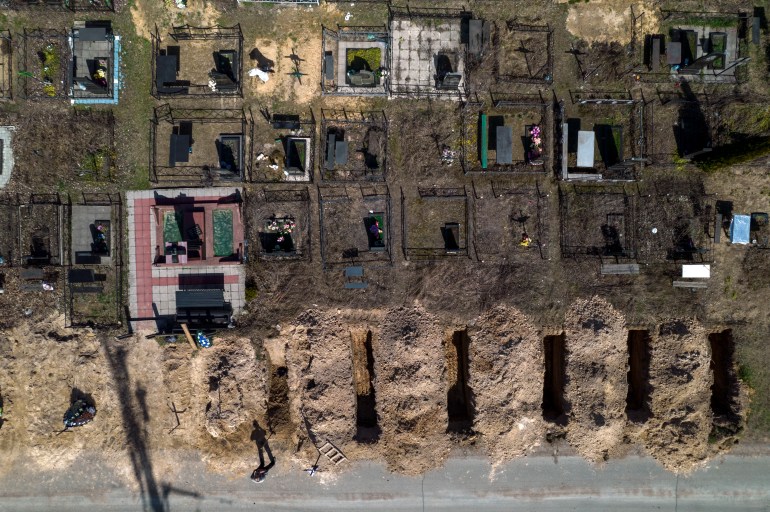Russia-Ukraine war: Three years of fighting in satellite images

In the war’s early weeks, Russia advanced from the north, east, and south, rapidly seizing vast areas of Ukrainian territory.
Kyiv, Irpin and Bucha
Russian forces heavily shelled Irpin, a key gateway to Kyiv, in an attempt to breach the capital’s defences, leaving much of the city’s residential areas and infrastructure in ruins.
The Ukrainian forces purposefully destroyed the bridge over the Irpin River on February 25 to thwart Russian advance toward Kyiv.
Meanwhile, in Bucha, the Russian occupation lasted several weeks. The true extent of what transpired in Bucha was only revealed after Russian forces retreated from the region, with many of the bodies of dead civilians lying across streets.
Mariupol
The siege of Mariupol, a key southern port and industrial hub, began on the first day of Russia’s full-scale invasion. By early March, the city was completely encircled, trapping civilians and defenders. The Mariupol Drama Theatre, a designated shelter for civilians, was destroyed in a March 16 air attack. Russian troops continued their assault on the Azovstal steel plant, besieging it with heavy airstrikes and artillery before regaining control of the sprawling industrial complex in May 2022, as Ukrainian forces made one last stand.
One of the war’s most bloody and destructive battles was at Mariupol during the siege. Hundreds of thousands of civilian deaths were estimated by Ukrainian officials, while Russia, the UN, and other international organizations all claimed war crimes.
Zaporizhia
Russian forces seized the Zaporizhzhia Nuclear Power Plant, the largest in Europe, in the Zaporizhia region in March 2022 after intense fighting. On March 4, 2022, Russian troops attacked the plant, leading to international fears of a nuclear disaster. Although the reactors were not struck, auxiliary buildings were also ruined by shelling.
Since then, Russia has maintained control over the plant, turning it into a military stronghold. Safety concerns persist despite the International Atomic Energy Agency (IAEA)’s (IAEA) repeated calls, which continue to threaten regional stability.

Source: Aljazeera
Leave a Reply